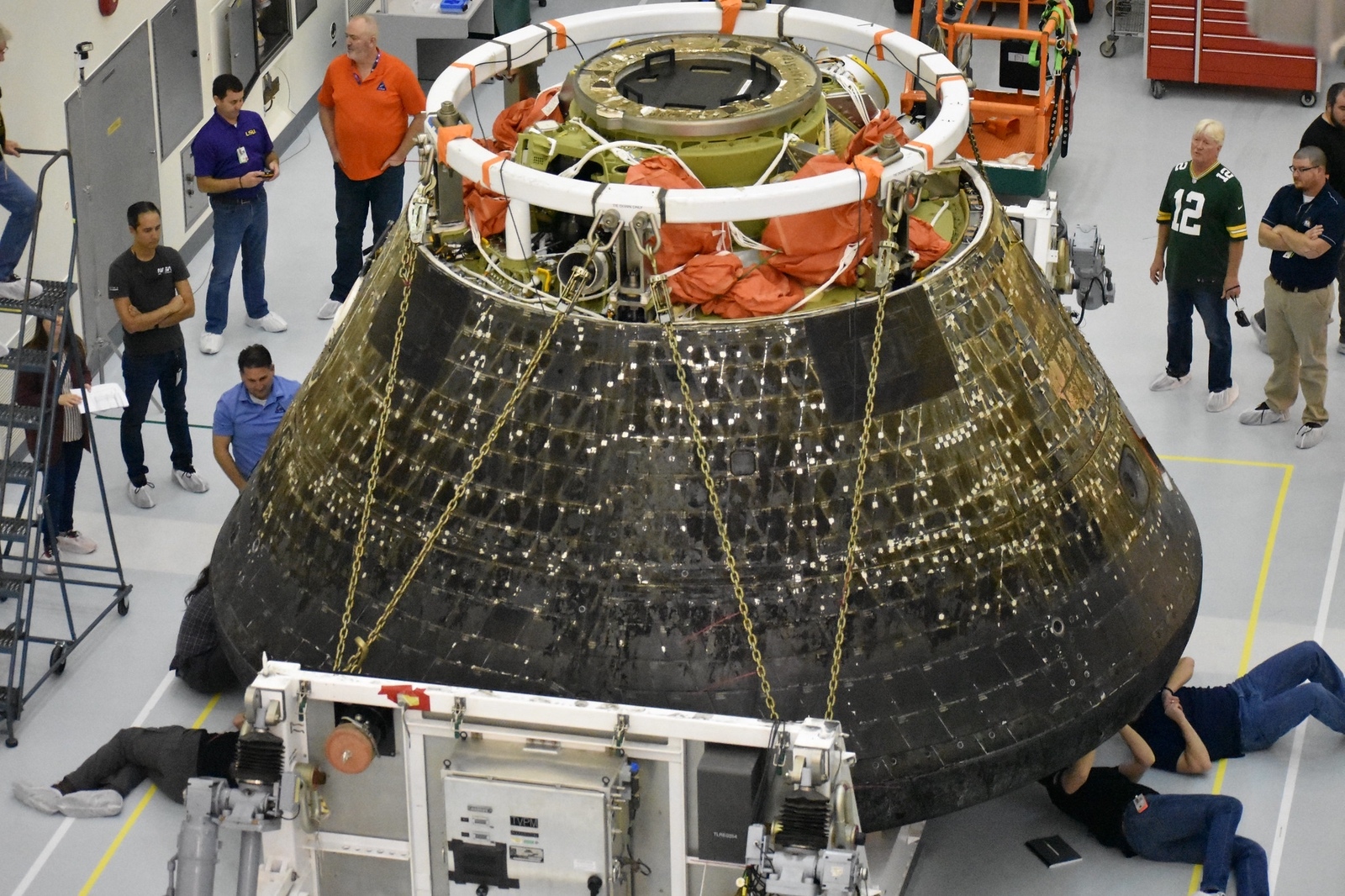21.11.2023

Technicians inspect the heat shield on the Orion capsule after Artemis 1. The heat shield lost most charred material than expected, but NASA managers said it was not a safety issue. Credit: NASA/Skip Williams
A year after the launch of the Artemis 1 mission, NASA is continuing to study the performance of the heat shield on the Orion spacecraft, a review that may take several more months to complete.
Jim Free, NASA associate administrator for exploration systems development, said at a Nov. 17 meeting of the NASA Advisory Council’s human exploration and operations committee that Artemis 2 remained on schedule for launch on the Orion spacecraft’s first crewed mission late next year, but that NASA would not proceed until it was sure it understood the problem and made any changes.
In the months after Artemis 1, which splashed down last December after three and a half weeks in cislunar space, NASA managers said that they noted more erosion of the material on the heat shield than expected during reentry. They emphasized at the time that the erosion did not jeopardize the spacecraft because the heat shield still had a “significant amount of margin” of the ablative material, known as Avcoat.
Free said the heat shield was “the one thing that we’re still working through” from Artemis 1. He didn’t elaborate in his presentation what NASA was still studying with the heat shield and its performance on last year’s flight.
Lakiesha Hawkins, assistant deputy associate administrator in NASA’s Moon to Mars Program Office, said later in the meeting that NASA expected to get a “tentative root cause resolution” on the heat shield erosion late next spring. “We will make sure that all of us are comfortable with where they are with root cause before we start talking about flight rationale.”
She said engineers are looking at some of the factors that could have caused the loss of the Avcoat material during reentry. That included the “skip” reentry trajectory performed by Orion and material properties of Avcoat. Ground testing, she said, has been able to mimic the conditions seen on the heat shield during reentry.
NASA and its contractors are continuing to process the various elements of the Artemis 2 mission, including Orion, to keep the mission on track for a launch in late 2024. “We’re still pressing forward with the hardware because we don’t see a reason to stop right now,” Free said. “If we find a reason to stop, we will stop.”
“There is continued processing of the vehicle for Artemis 2, but we’re just doing that to try to manage schedule,” Hawkins said. “If we do need to go back, if we do need to undo things up to and including replacing heat shield components, we are entirely open to that.”
Neither Free nor Hawkins said what impact there would be on the schedule for Artemis 2 if the Orion heat shield needs to be modified or replaced. Hawkins said that other elements of the mission, including the Space Launch System rocket and ground systems, were on track with SLS in particular having “great margin” on its schedule.
Free said one question is when workers should start stacking booster segments, beginning the integration of the SLS at the Kennedy Space Center. “We want to stack so that our limited life items are properly protected,” he said.
“We are not going to fly until we are ready to fly, until we understand everything from Artemis 1,” Free emphasized.
Quelle: SN
